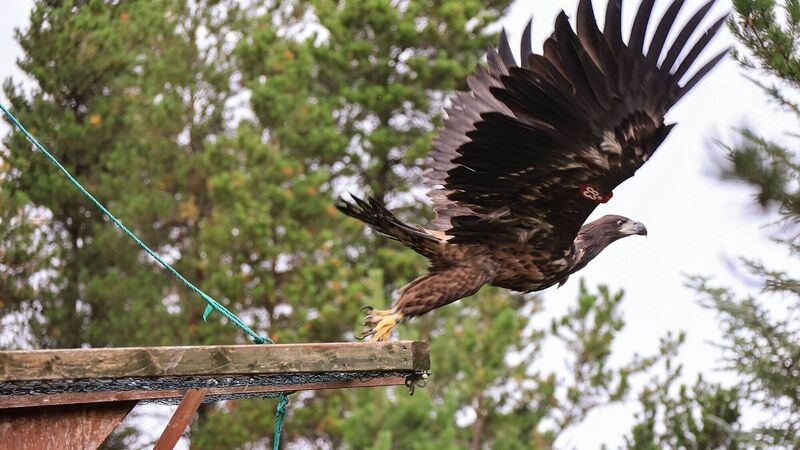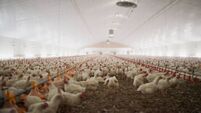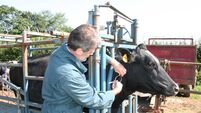White-tailed eagle chicks and Ireland’s rarest amphibian released in Kerry

The end of the White-Tailed Eagle Reintroduction Programme with the release of four white-tailed eagle chicks back into the wild at Killarney National Park. Picture: Valerie O'Sullivan
The final cohort of chicks was released recently as part of the white-tailed eagle reintroduction programme.
This year's chicks were the final 26 to be released as part of the National Parks and Wildlife Service (NPWS) reintroduction project, which was established in 2007. The programme is ending following several releases around the country this month.
The end of the White-Tailed Eagle Reintroduction Programme was marked with the release of the remaining four chicks within the final cohort back into the wild at Killarney National Park.
A once native bird to Ireland, the white-tailed eagle became extinct in the 19th century due to human persecution. Since the programme’s start in 2007, the NPWS has been working with partners in Norway, alongside local farmers and communities around the country to reintroduce and re-establish white-tailed eagle populations in Ireland.
The programme has released some 245 eagle chicks into he wild since its establishment in 2007. The white-tailed eagle is a bird of prey which plays an important part in protecting our biodiversity. They settle on territories around the coast and large freshwater lakes to breed. White-tailed eagles are a protected species under the Wildlife Act.
Speaking at the final release, nature and biodiversity minister Christopher O’Sullivan, said: “Over 18 years of work and collaboration have led to a growing white-tailed eagle population and have also seen habitat restoration, and engagement with landowners and farmers to secure the eagles' ongoing protection.
"It is one of a number of key NPWS initiatives under way to restore our biodiversity. This is the second phase of this reintroduction project, and we now have evidence of white-tailed eagles breeding in counties further afield — from the south of the island in Cork right up to Donegal.”
The released eagles have subsequently dispersed widely throughout Ireland, with the first successful breeding occurring in 2012 on Lough Derg, Co Clare. By July 2020, a small breeding population of eight to 10 pairs had successfully fledged 31 chicks across counties Cork, Kerry, Clare, Galway and Tipperary, including a pair who produced triplets.
It is estimated there are now about 150 individual eagles in the wild in Ireland, enough to maintain and sustain the population. So far in 2025, the exact number of chicks born in the wild is unknown, but there are 17 known pairs in total. In 2024, a total of 13 chicks were born from 10 pairs.

Also taking place in Kerry was the release of natterjack toadlets. The natterjack toad is an endangered species and is also Ireland’s rarest amphibian, unique to the coastal area of Castlemaine Harbour and Castlegregory in Co Kerry.
Since 2016, the NPWS has been working with Fota Wildlife Park and Oceanworld Dingle on a conservation project which aims to enhance the survival prospects of the species and prevent its further decline.
The natterjack population has declined over time due to land reclamation and changes in agricultural practices. Natterjacks typically breed in shallow sunny ponds to avoid predators.
The conservation scheme undertaken by NPWS compensates farmers for creating and maintaining suitable breeding habitats on farms. The project also sees NPWS staff collecting natterjack toad spawn from ponds, which are then brought to Fota Wildlife Park, where they are reared in special holding tanks to be later released.
Speaking at the release, Fota Wildlife Park director Aileen Tennant said: “These species are part of our natural heritage and deserve every chance to thrive. This year’s release of over 2,000 toadlets, bringing to over 13,000 toadlets since the headstarting programme began in 2016, is a testament to the power of these collaborative conservation efforts.”











